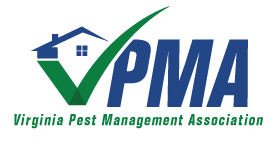Upcoming Events view all events
Our Sponsors view all sponsors
Latest News view all news
12/15/2025
Bright Minds Chart a Bright Future: VPMA Sets Bold Course for the Year Ahead
VPMA’s brightest leaders came together to reflect, refocus, and reimagine the year ahead—and the results set an exciting tone for 2026. From record-setting education and training successes to meaningful regulatory progress and bold new initiatives, this article highlights how VPMA is expanding its impact for members across Virginia. Discover the key wins from 2025, the strategic priorities shaping the future, and how renewed leadership and committee engagement are positioning VPMA as the industry’s strongest advocate and resource. If you want a preview of what’s ahead—and how it benefits you—this is a must-read.
Details >11/04/2025
Virginia Chapter of PWIPM Invites YOU to a Social in Conjunction with the Virginia Summit
The VPMA Pest Management Summit is being held next week at the Omni Richmond Hotel. The Virginia Chapter of Professional Women in Pest Management is hosting a casual meetup in conjunction with the Summit. Join us on Wednesday, November 12th from 8:00 - 9:00 pm in the Westham Tavern at the Omni. Even if you aren't attending the Summit - drop in to meet up with fellow professionals - guys & gals! Click below for details and to RSVP through the QR Code!
Details >11/03/2025
ICYMI: Regulatory Alert! Immediate Action Needed!
VPMA has submitted a Petition for Rulemaking to VDACS to propose the creation of a new pesticide certification category specific to Non-area-wide Public Health Pest Control. The public comment period is open. We need you to comment!
Details >10/31/2025
Register Now for the Summit!
After 20 years of leading technical and business management training through the State Technical Meeting, we’re evolving the meeting into a Summit — a forward-looking event that brings together the best minds in pest management for learning, innovation, and collaboration. Now with expanded topics, broader perspectives, and more opportunities to connect, there is something for everyone in the pest control industry.
Details >
